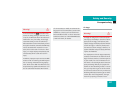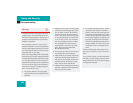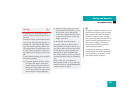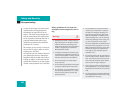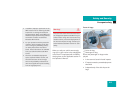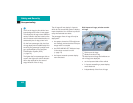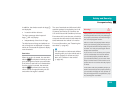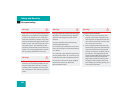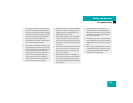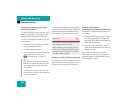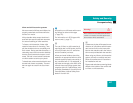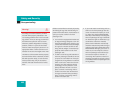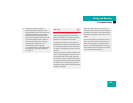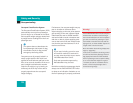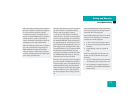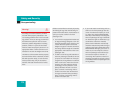
65
Safety and Security
Occupant safety
The system is designed to enhance the
protection offered to properly belted oc-
cupants in certain frontal (front air bags
and ETD) and side (side impact and win-
dow curtain air bags and ETD) impacts
which exceed preset deployment
thresholds and in certain rollovers (win-
dow curtain air bags and ETD).
ț Never wear the shoulder belt under your
arm, against your neck or off your shoul-
der. In a frontal crash, your body would
move too far forward. That would in-
crease the chance of head and neck in-
juries. The belt would also apply too
much force to the ribs or abdomen,
which could severely injure internal or-
gans such as your liver or spleen.
ț Never wear belts over rigid or breakable
objects in or on your clothing, such as
eyeglasses, pens, SmartKeys etc., as
these might cause injuries.
ț Position the lap belt as low as possible
on your hips and not across the abdo-
men. If the belt is positioned across your
abdomen, it could cause serious injuries
in a crash.
ț Never use a seat belt for more than one
person at a time. Do not fasten a seat
belt around a person and another per-
son or other objects.
ț Belts should not be worn twisted. In a
crash, you wouldn’t have the full width
of the belt to distribute impact forces.
The twisted belt against your body could
cause injuries.
ț Pregnant women should also use a
lap-shoulder belt. The lap belt portion
should be positioned as low as possible
on the hips to avoid any possible pres-
sure on the abdomen.
ț Never place your feet on the instrument
panel, dashboard, or on the seat. Always
keep both feet on the floor in front of the
seat.
ț When using a seat belt to secure infant
or toddler restraints or children in boost-
er seats, always follow the child seat
manufacturer's instructions.



